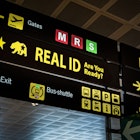
Dec 10, 2025 • 4 min read
TSA has just recently introduced another alternative called TSA Confirm.ID – but it will cost you. Here's everything US travelers need to know.

Dec 10, 2025 • 4 min read
TSA has just recently introduced another alternative called TSA Confirm.ID – but it will cost you. Here's everything US travelers need to know.

Dec 6, 2025 • 6 min read
The Amtrak route between the San Francisco Bay area to Chicago shows a diverse cross-section of the nation that you won't find anywhere else.
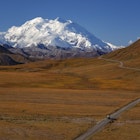
Nov 26, 2025 • 6 min read
Sunrises, stargazing, s’mores – RV camping in 10 US national parks immerses visitors in natural beauty from a comfortable and mobile base.

Nov 26, 2025 • 7 min read
Take in the true scope of the continental USA by setting out in an RV or camper. Here are 10 states you’ll want to add to your itinerary.
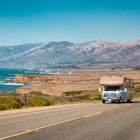
Nov 26, 2025 • 6 min read
Take a drive in the US with our pick of the best road trips, from the iconic Route 66 to the scenic Pacific Coast Highway.

Nov 26, 2025 • 16 min read
Here's what you need to know about the lifestyle of long-term recreational vehicle living from people who've done it.

Nov 26, 2025 • 14 min read
In a country mad for the open road, Route 66 is the quintessential American road trip. Our full guide covers where, when and how to get the most out of it.
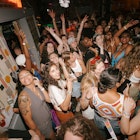
Nov 24, 2025 • 6 min read
Across the US, new and lesser-known lesbian bars are standing up, standing out and driving queer women back into prized neighborhood hangouts.

Nov 19, 2025 • 10 min read
Explore national parks, relax on beaches, and catch live music in vibrant cities: here are just some of the US's best experiences.
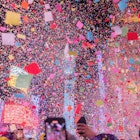
Nov 11, 2025 • 7 min read
If you’re looking to head somewhere new this New Year’s, try one of our US staff’s top recommendations to ring in 2026.

Nov 11, 2025 • 4 min read
As the United States federal government shutdown continues, here’s what travelers need to know.

Nov 3, 2025 • 6 min read
Whether you crave clear skies for stargazing, a cozy log fire to snuggle up by, or a hot springs soak, here are the best offbeat winter trips in the USA.

Oct 30, 2025 • 6 min read
Wander through a festive European-style market in the US. Here are the best.

Oct 27, 2025 • 13 min read
These unique properties aren’t just cool places to lie your head after a big day of driving – they make the journey even more memorable.

Oct 22, 2025 • 2 min read
Whether you’re already on the road or looking for somewhere to chow down on turkey, here are five National Parks where you can celebrate Thanksgiving.

Oct 22, 2025 • 5 min read
Creole trail rides offer a glimpse into the history of African American cowboys.

Oct 20, 2025 • 3 min read
Spending hours locked in an airport may seem like a special type of purgatory, but instead make the most of it with these tips.

Oct 3, 2025 • 4 min read
In early November, millions memorialize the departed with Día de Muertos. Here are the best US celebrations.

Oct 2, 2025 • 7 min read
Strap on your snowshoes! Here's our pick of the best nature walks and hikes to do this winter in the US.

Sep 29, 2025 • 11 min read
From Naples to Santa Barbara to Sedona, here are all the places to escape the cold in the USA this winter.

Sep 26, 2025 • 5 min read
Some places draw visitors both human and supernatural. Here are eight places all over the USA where you might enjoy a...spirited encounter.

Sep 22, 2025 • 5 min read
Line the streets of major US cities to mark the start of the festive season at these top Thanksgiving parades.